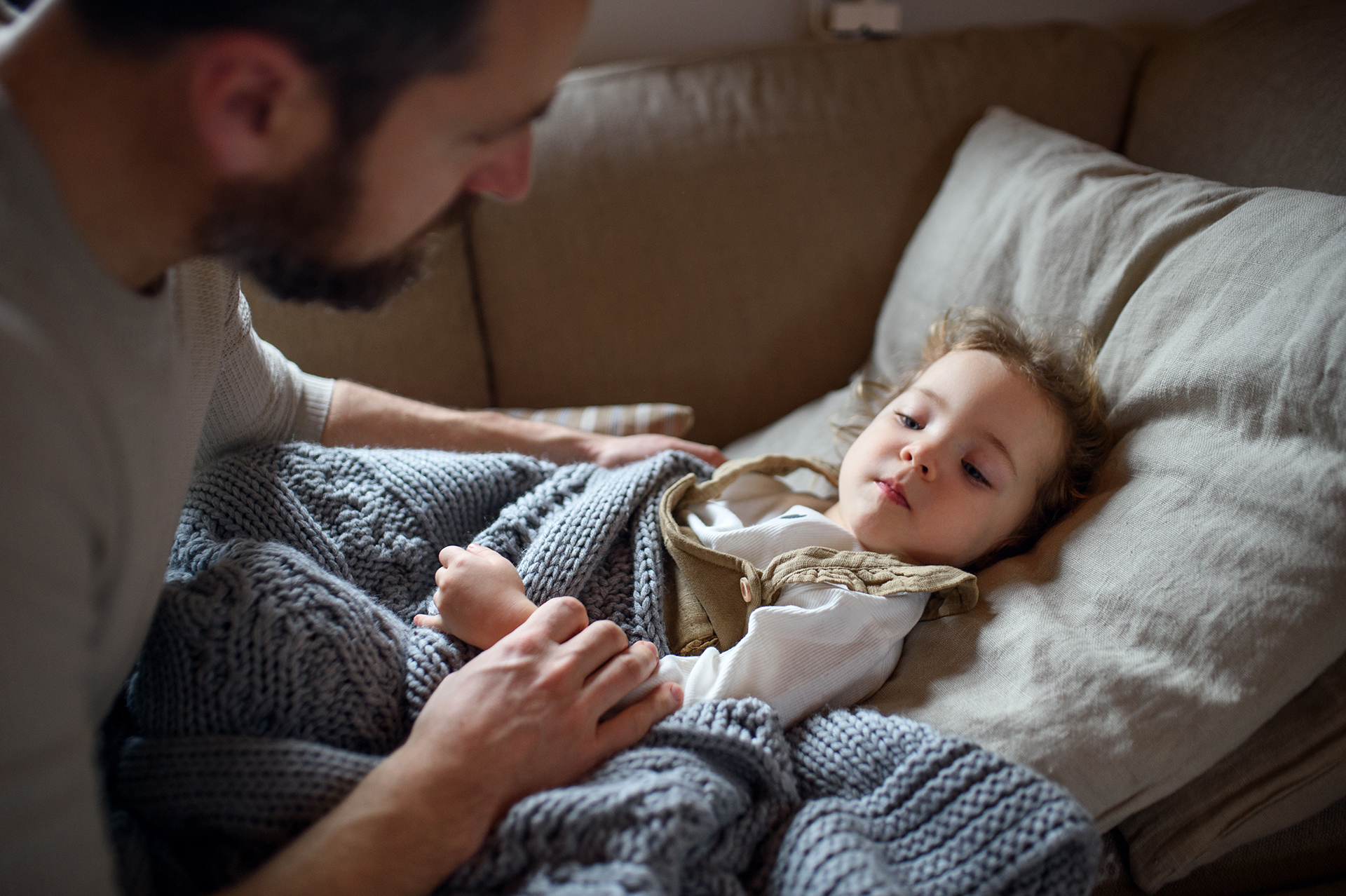Mononucleosis, or the kissing disease, can remain undetected, but sometimes it becomes serious.
- Mononucleosis caused by the Epstein-Barr virus, or EBV, is transmitted through saliva – therefore it is also called a kissing disease.
- Common symptoms of the disease are high fever, swollen lymph nodes and severely sore throat.
- Although there is no curative treatment for the disease, troublesome symptoms can be relieved. Digital Clinic helps without booking an appointment.
The EBV virus, which causes mononucleosis, can cause troublesome and long-lasting symptoms, but fortunately the disease usually cures quickly and easily especially in young children. In practice, many do not even know that they have had mononucleosis.
The most typical symptoms of mononucleosis are:
- high fever
- swollen lymph nodes in the neck and elsewhere in the body
- sore throat
Sometimes, mononucleosis also causes these symptoms:
- swollen eyelid
- maculopapular rash in the body
- enlargement of the spleen or liver
- hepatitis
There is no cure for mononucleosis, and the disease usually subsides on its own. Hepatitis associated with the disease also heals on its own.
You can safely monitor your child’s health at home.
- You can treat the pain with painkillers.
- Drinking plenty of fluids prevents dehydration, relieves the sore throat and helps with fever.
- Let the child rest and play according to their energy level.
Consult your doctor if:
- adequate eating or drinking is difficult due to severely sore throat. The child may need hydration or more effective pain relief, or may have tonsillitis at the same time that requires antibiotic treatment.
- the general condition is particularly bad or difficult symptoms are prolonged. The possibility of rare sequelae or other infections should be ruled out.
- the enlarged spleen is subjected to an impact. In this case, the child needs immediate care.
Mononucleosis often lasts longer than other infectious diseases. Symptoms usually pass in about 10 days. Full recovery can take time, as feeling weak and tired can persist for up to months.
If the spleen is enlarged, you should not return to sports for at least three weeks. This is due to the fact that an enlarged spleen may rupture easily. If this happens, the situation is serious and requires hospitalisation.
Mononucleosis is also called a kissing disease, as the Epstein-Barr virus that causes mononucleosis is transmitted through saliva.
Almost everyone is infected with the EB virus in Finland – usually as a child or at the latest in adolescence. In some of the infected, it leads to a condition called mononucleosis.
Very often, especially at school age, infections pass asymptomatically or they are contracted as a common cold-like illness. Viruses other than EB virus, such as cytomegalovirus, can sometimes cause an illness similar to mononucleosis.
Small children often get the disease in the day care centre, when toys go in the mouths of the little ones. If the disease is missed in childhood, it will almost certainly be encountered as a teenager through kissing.
After having the disease, EBV remains dormant in the body. Occasionally, the virus is activated and excreted in the saliva of the patient. Symptoms do not then appear on the carrier of the virus, but the disease can be transmitted to others, for example, through kissing.
Fortunately, the disease is not highly contagious, so there is no need to isolate the sick child. The child can also return to the day care centre or school when they are feeling well.
The specialist for this was Paediatrician Jukka Vakkila.
Typical symptoms of mononucleosis are high fever, swollen lymph nodes and severely sore throat.
The disease can also cause eyelid swelling, rash, inflammation of the liver and enlargement of the spleen and liver.
The doctor can diagnose mononucleosis in a child on the basis of the symptoms when the disease is typical.
The rapid mononucleosis test detects mononucleosis in adults, but is not reliable when used for young children.
It is important to distinguish mononucleosis from tonsillitis which must be treated with medicine. This can be examined, for example, from the blood count. The child may also have tonsillitis and mononucleosis at the same time.
Although there is no curative treatment for mononucleosis, but symptoms can be relieved with painkillers, adequate drinking and rest.
On rare occasions, drinking is so difficult due to a sore throat that hydration in a hospital is necessary.
In adults, the symptoms of mononucleosis are often more severe than in children. The risk of rare sequelae, such as encephalitis, meningitis and myocarditis, increases with age.
Mononucleosis is often accompanied by a high fever, but the disease can even be asymptomatic in young children.
Serious sequelae are rare in mononucleosis, but possible especially in adults. Encephalitis, meningitis and myocarditis can occur as sequelae.
Mononucleosis is usually over in about ten days, but abnormal tiredness and weakness may persist for a couple of months.
Mononucleosis caused by the EBV virus occurs only once.
Mononucleosis is not very contagious. Contamination requires saliva contact, which means that it is transmitted as its name suggests, for example, when kissing.
In mononucleosis, inflammatory values are usually not elevated – unlike, for example, tonsillitis that causes similar symptoms.
A rash may occur during mononucleosis especially if the patient is treated with an Amoxicillin antibiotic course due to concurrent tonsillitis. A rash does not indicate a drug allergy and is not dangerous.
Mononucleosis in a child Our paediatrician assess the child's symptoms and assists in treatment.
If necessary, you can also bring the child to our general practitioner’s appointment.
Questions about mononucleosis? Our Digital Clinic is a quick and easy way to get answers.
Remote appointments can be used to treat symptoms and diseases that do not require a physical examination.
Consult the Digital child health clinic to ask questions about your child’s care or parenting. Qualified midwives and nurses provide support 24/7, either for a one-time fee or a fixed monthly fee.
